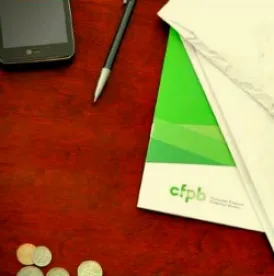On June 21, 2023, the CFPB released two Data Spotlight reports focused on the Southern states, entitled “Banking and Credit Access in the Southern Region of the U.S.” and “Consumer Finances in Rural Areas of the Southern Region.” This blog focuses on the Banking and Credit Access Data Spotlight and an upcoming blog will address the second CFPB publication.
The CFPB’s extensive report seeks to identify gaps in banking and credit access in the Southern region of the United States, including Alabama, Arkansas, Georgia, Louisiana, Mississippi, North Carolina, South Carolina, and Tennessee, which is home to 48 million people. The report notes that the Southern region of the country is both diverse and home to a “significant share of the rural population,” with 23% of people living in a rural county as compared to 14% of people nationwide. The South is unique in that more than a third of its residents are people of color, and 70% of the country’s rural Black population lives in the South. Additional details and characteristics of the region are set forth in Section 1 of the CFPB’s report.
Banking & Credit
The Bureau identifies “banking deserts” as “prevalent throughout the southern region” as a result of bank or credit union branches not being present in local communities. The Bureau also found some communities to be “credit deserts” where credit may not be available at fair and competitive terms, regardless of whether banking branches are available. A banking branch may be associated with greater access to banking services, including credit, but that “presence alone may not be a sufficient indicator of access to [banking] services.”
The Bureau found that there is “uneven access” to banking and credit in the South, particularly for rural communities and communities of color. In particular, the Bureau noted:
-
The Southern region has fewer branches per person than elsewhere in the U.S., with 3.6 branches per 10,000 people, compared to five branches per 10,000 people nationally. Further, only 69% of rural Southern households have access to broadband internet, as compared to 83% of national households, which may also make online banking less accessible.
-
The national unbanked rate is 4.5%, and it is 5.6% for the Southern region. Mississippi and Louisiana have the highest unbanked rates in the country, at 11.1% and 8.1% respectively. Not surprisingly, the highest unbanked rates in the region are in rural communities and communities of color. Notably, the rural unbanked rate in Mississippi and Georgia are almost double that of the unbanked rate in the states’ metro areas.
-
The most common reason for unbanked households in the Southern region is the inability to meet banks’ minimum balance requirements. Other common barriers are distrust of banks, privacy concerns, high fees, and barriers to meeting identification requirements.
The Bureau’s conclusion to the observations on banking and credit noted “[o]pportunities to close the gaps may exist in addressing barriers to bank account access for households in rural communities and communities of color,” but they offered no specific recommendations or ways in which the government can remedy the uneven access to credit.
Mortgage Lending
The Bureau noted that the high rate of Black homeownership in the South, as compared to the rest of the country, was a positive and unique defining characteristic. However, significant gaps between Black and white homeownership remain, and the rate of Black homeownership has been declining in some parts of the region since the financial crisis in 2008. The gap does not appear to exist due to a lack of demand for mortgage lending. The report notes:
-
61% of mortgage loans in the South, including 55% in its rural areas, are made by non-depositories. And 55% of loans in the region are made by just a few high-volume, non-depository lenders.
-
Rural Southerners apply for home loans at the same rate as consumers nationally (19 per 1,000 residents) and at a slightly higher than rural consumers elsewhere. However, their mortgage applications are more likely to be denied than in the rest of the country (27% of applications are denied in rural Southern counties compared to 11% nationally). For consumers in “rural persistent poverty counties,” the denial rate is 39%.
-
Rural borrowers, minority borrowers, and low-income and moderate-income neighborhoods in the South have a lower share of home purchase loans than their share of the population. Only 14% of home purchase loans in the United States in 2021 went to rural areas, even though 23% of the population of the country lives in a rural county. Further, between 2018 and 2021, only 9% of purchase money loans were made to Black rural borrowers in the South, even though they are 24% of the region’s rural population.
-
Mortgage interest rates in the region’s rural areas are higher, on average, than mortgage interest rates nationally.
-
The Bureau’s initial analysis shows that credit scores alone do not explain the unequal lending levels. “[A]pplicants of color experience higher denial rates than white applicants,” even among high-credit score borrowers in rural and urban areas.
The CFPB notes that its mortgage lending findings are preliminary and that further analysis is likely needed in some areas, including loan terms offered by non-depository lending institutions and the low lending levels by depository institutions. The Bureau believes “this data highlights the important role of the federal housing finance infrastructure in meeting the needs of this region through government-backed lending programs and the secondary market.”






 />i
/>i
